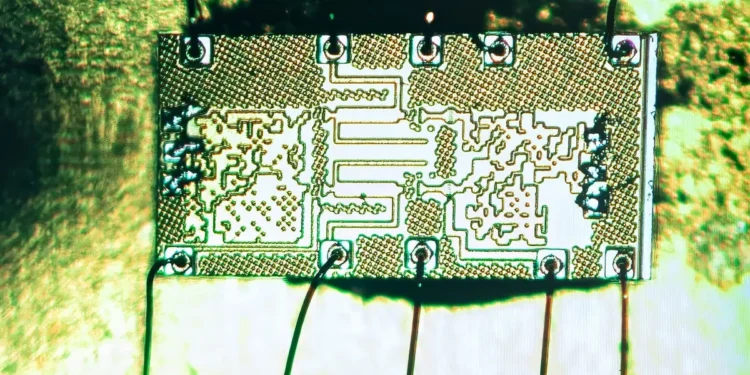Artificial intelligence has once again demonstrated its ability to revolutionize technology, this time by designing advanced wireless chips in just a few hours—something that would have taken human engineers weeks to accomplish. The resulting chip designs are not only more efficient but also feature unconventional structures that defy traditional engineering principles.
AI Breaks New Ground in Chip Design
Researchers from Princeton Engineering and the Indian Institute of Technology have leveraged deep-learning models to develop millimeter-wave (mm-Wave) wireless chips. These chips are essential components in 5G networks and modern mobile devices, yet their intricate design has long posed challenges for manufacturers due to the need for extreme miniaturization and efficiency.
Conventional chip design relies on a combination of expert knowledge, predefined circuit blueprints, and a trial-and-error optimization process. However, this method is slow, as human engineers must carefully refine each element to ensure performance. In contrast, the AI-driven approach abandons traditional templates and focuses solely on achieving the best possible output—resulting in designs that no human would likely conceive.
A Radically Different Approach
Instead of constructing circuits using familiar components, the AI treats the entire chip as a single structure, optimizing every detail from scratch. This method, known as inverse design, allows the algorithm to determine inputs and parameters based on the desired performance rather than being constrained by conventional layouts.
According to lead researcher Kaushik Sengupta, a professor of electrical and computer engineering at Princeton, the AI-generated structures appear almost random to the human eye. They look nothing like what an engineer would create. However, when the team manufactured and tested these chips, they found that AI designs exceeded the efficiency of existing models.
Potential and Limitations
While the results are promising, researchers caution that AI is not yet ready to fully replace human designers. Some of the generated designs failed to function correctly—a phenomenon comparable to the “hallucinations” seen in generative AI models. Human oversight remains necessary to refine and correct these flawed designs.
Rather than eliminating engineers from the process, the goal is to enhance their capabilities. “The point is not to replace human designers but to provide them with tools that improve productivity,” Sengupta emphasized.
A Glimpse into the Future
The ability to rapidly develop and test multiple iterations of chip designs opens the door to new possibilities. Some chips can be optimized for energy efficiency, while others can prioritize speed or operate at higher frequencies. Given the increasing demand for wireless technology and miniaturized electronics, AI-driven design methods could soon become an industry standard.
Sengupta believes this breakthrough is only the beginning. If the AI-based approach can be extended beyond wireless chips to other components, it could fundamentally transform the way electronic devices are engineered.











